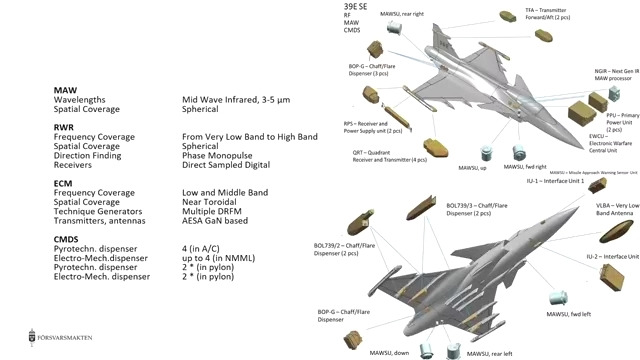The AIM-4, Pk, and Hit to Kill, or why the AIM-4 was, in my opinion, the deadliest air-to-air missile the US had in the '60s.
A short thread on why the hit-to-kill method employed by the AIM-4 Falcon was more effective than the influence fuzes of its contemporaries.🧵
A short thread on why the hit-to-kill method employed by the AIM-4 Falcon was more effective than the influence fuzes of its contemporaries.🧵

The best place to start is with missile development status in 1951. Thanks again to @MassiasThanos for finding this document (ADA8001650 p.158).
At the time, the relative effectiveness of various methods for warhead kill was unknown. As such, different methods were explored.
At the time, the relative effectiveness of various methods for warhead kill was unknown. As such, different methods were explored.

The Falcon was intended to exploit the advantages that its highly accurate guidance and autopilot system provided it. By ensuring a direct hit, the warhead could be much smaller (1/3-1/10 the size), performance could be higher, and front-aspect shots were more reliable. 

This is not to say that the warheads of other missiles were not lethal. They were very dangerous to all sorts of different targets, both fighter and bomber, but the Falcon stood out, especially in regards to bomber interception.
Since I have no information on Sparrow III warhead effectiveness, I will be using Sparrow II data from CARDE instead, with continuous rod and blast-frag.
The CARDE assessment was a simulation designed to assess the performance of the AAM-N-3 Sparrow II against a TU-95 target.
The CARDE assessment was a simulation designed to assess the performance of the AAM-N-3 Sparrow II against a TU-95 target.

Though this only gave rough estimates, it still proved that an expected radar missile shot against a heavy bomber was not very likely to result in a kill.




The fears expressed in 1951 of fuze issues ended up coming true, though not in quite the same way.
The radar fuzes of early AIM-7s suffered significantly over Vietnam, even at higher altitudes. They would fail to detect the target, or detonate too early.
The radar fuzes of early AIM-7s suffered significantly over Vietnam, even at higher altitudes. They would fail to detect the target, or detonate too early.

This trend of a lack of lethality continued with the Sidewinder. With more optimistic numbers, the AIM-9B's measly 25-pound warhead gave a catastrophic kill percentage of 30-40%.
The 9B's infrared influence fuze also suffered from severe issues and was rear-aspect only.
The 9B's infrared influence fuze also suffered from severe issues and was rear-aspect only.

Why were these numbers so low? We go back to the methods that most warheads use to destroy or damage a target. Fragmentation. This means that pK is a dice roll. Due to miss distance and fragment distribution, there is a chance that none of the fragments will do any damage!
By lowering miss distance, you can ensure that more fragments will hit in a small area, increasing the point damage and the probability of damaging something important in that area, but it still does not ensure a kill.
The Falcon's accuracy allowed it to bring that miss-distance down to zero. By detonating 2.5-5 pounds of HBX explosive wherever it hit, it could ensure severe damage and increase the chances of bringing down a bomber.
This was for multiple reasons. The first was that of blast effects. The Mk 108 used by Germany in the Second World War was exceptionally effective.
The combination of blast and fragmentation, from only 3 ounces(!) of PETN explosive, could nearly cut a Bristol Blenheim in half.
The combination of blast and fragmentation, from only 3 ounces(!) of PETN explosive, could nearly cut a Bristol Blenheim in half.

The second reason was the semi-penetrating effect of the AIM-4.
The Falcon's wing-mounted contact fuzes were placed behind the warhead. This means that, like a timed fuze for a cannon shell, the AIM-4's warhead would penetrate the aircraft's skin before detonating.
The Falcon's wing-mounted contact fuzes were placed behind the warhead. This means that, like a timed fuze for a cannon shell, the AIM-4's warhead would penetrate the aircraft's skin before detonating.

This effect was noted even before the development of the Falcon, with the extremely high effectiveness of the Folding Fin Aerial Rocket in bomber interception. Even a single hit could bring down a heavy bomber. 

This also brings us back to the first document, which mentions the low weight of the Falcon allowing the carriage of multiple missiles.
Falcons were designed to be launched in a salvo. Two or three for the early Falcons, and two for the late Super Falcons.
Falcons were designed to be launched in a salvo. Two or three for the early Falcons, and two for the late Super Falcons.

As such, Pk assessments were extremely high for the Falcon family. The Super Falcon, when employed against bombers, was expected to far outperform any of the influence-fuze-based missiles.




Unfortunately, I've struggled to find a study for the AIM-4 comparable to the CARDE assessment of the Sparrow II, so like-for-like will have to wait until I can get my hands on test documents.
With the death of the AIM-4 program and the exaggerated issues with hit-to-kill against maneuvering targets, this method of bringing down targets was abandoned.
As higher missile maneuverability becomes possible, especially through bank-to-turn guidance, I believe we may see a return to hit-to-kill missiles for air-to-air. Their reliability and weight savings may prove a significant draw over even advanced blast-frag warheads.
• • •
Missing some Tweet in this thread? You can try to
force a refresh

























